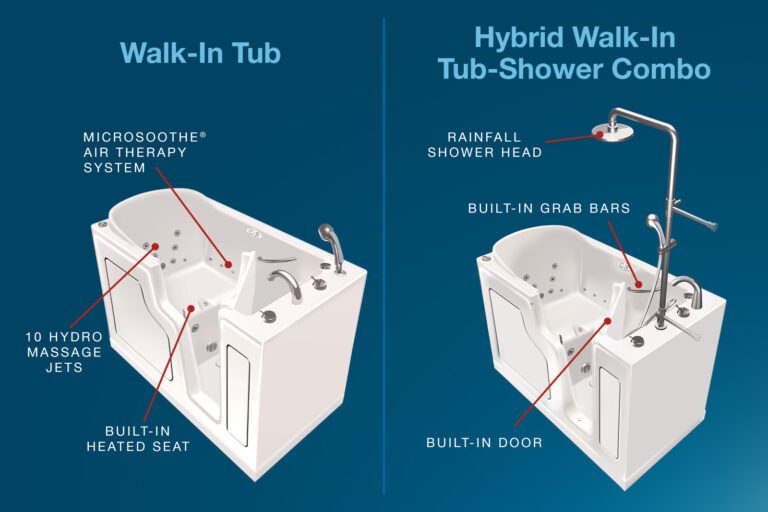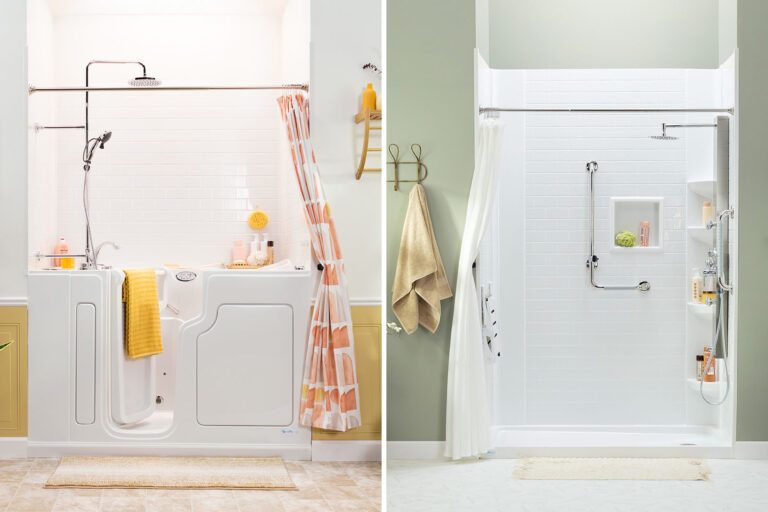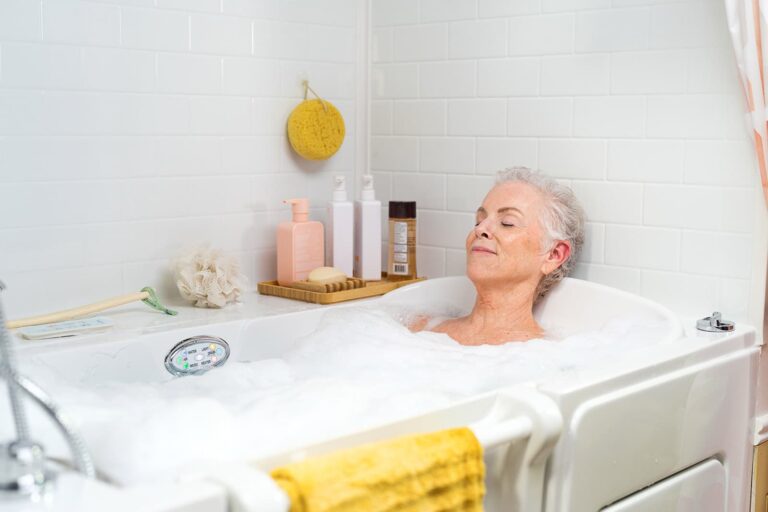A Comprehensive Guide to Walk-In Bathtubs
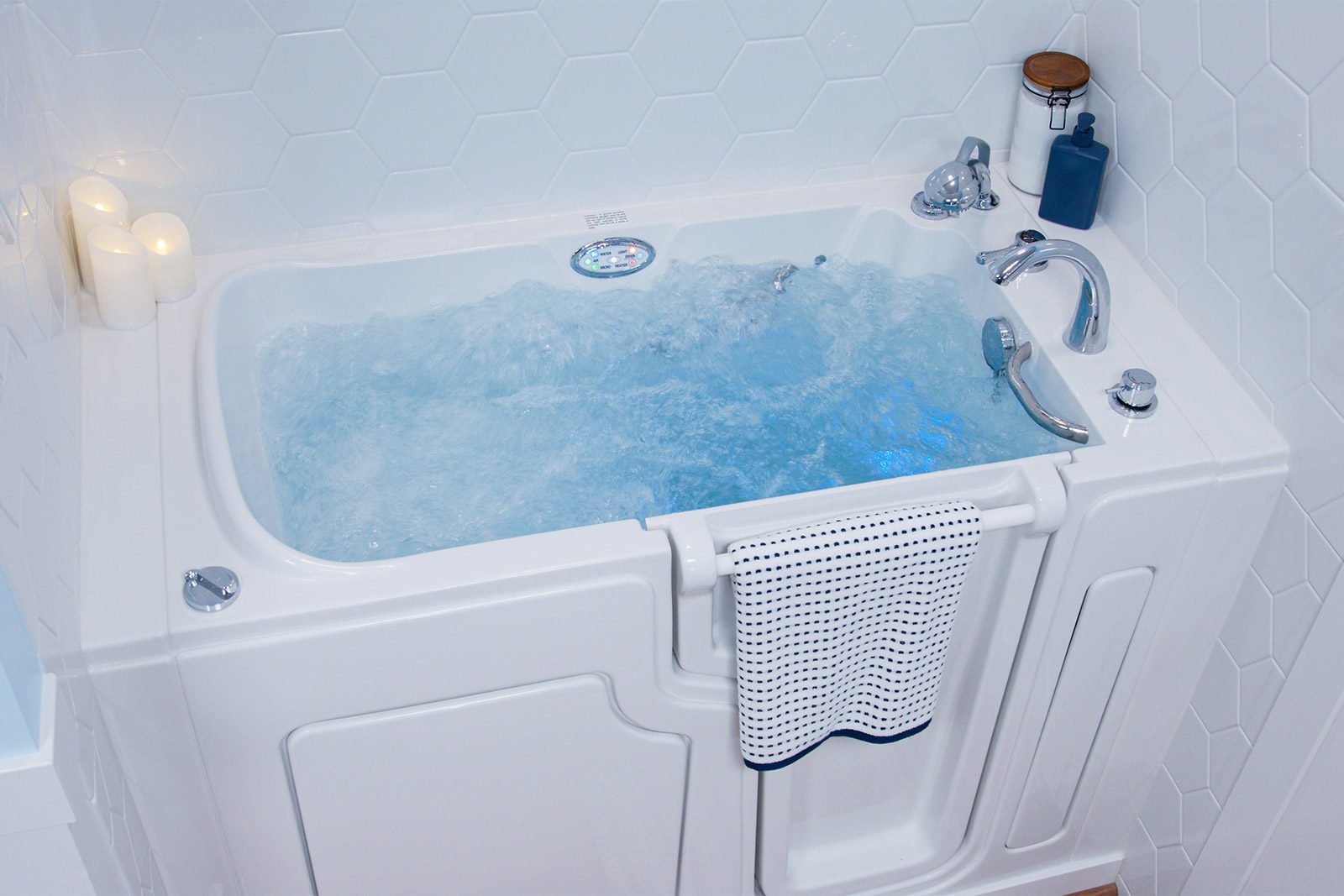
For many seniors, a walk-in bathtub can be a powerful tool of independent living that allows many to age in the home without fear of injury or inconvenience. Aging can take a toll on mobility, as many seniors can attest to the difficulty of navigating an often-used space such as the bathroom. While the bathroom may seem innocuous enough to someone who doesn’t live with mobility challenges, it can be a dangerous and difficult place to move with its constant dampness, slick surfaces and few steady places to grab onto for balance.
Fortunately, walk-in bathtubs for seniors can provide confidence and comfort in the bathroom by confronting many of the challenges those with mobility issues may face. If you have ever experienced difficulty entering and exiting the bathtub in your home, you could benefit from the installation of a walk-in tub.
What Is a Walk-in Tub?
You may have never seen a walk-in tub, but the name provides a clue about the design of these accessibility devices. With a standard bathtub, individuals need to step as high as 18 inches from the ground to enter, putting undue strain and difficulty on people with balance issues or mobility impairment.
A walk-in tub deals with this obstacle in a straightforward, innovative way thanks to a watertight door built into the side of the tub. The door allows the user to step up only a few inches, which makes entering the tub easier and safer. Plus, many walk-in tubs provide therapy-forward benefits and added convenience, from no-strength locking handles to hydro massage jets for a more nourishing experience than just a bath.
What Are They Made From?
Walk-in tubs are typically made from either acrylic or fiberglass, materials that are suitable for the weight requirements and damp conditions experienced during the bathing process.
Most walk-in tubs are molded from acrylic, which involves layering sheets of plastic with layers of fiberglass. Acrylic tubs can come in many colors, though most are muted, neutral tones. The benefits of acrylic tubs are their durability and low maintenance, though they cost slightly more than other types.
Gelcoat is another common material used in walk-in tubs. Gelcoat utilizes resin and fiberglass, creating a light, strong tub that is easy to clean. Tubs in both categories may have steel frames or components as well.
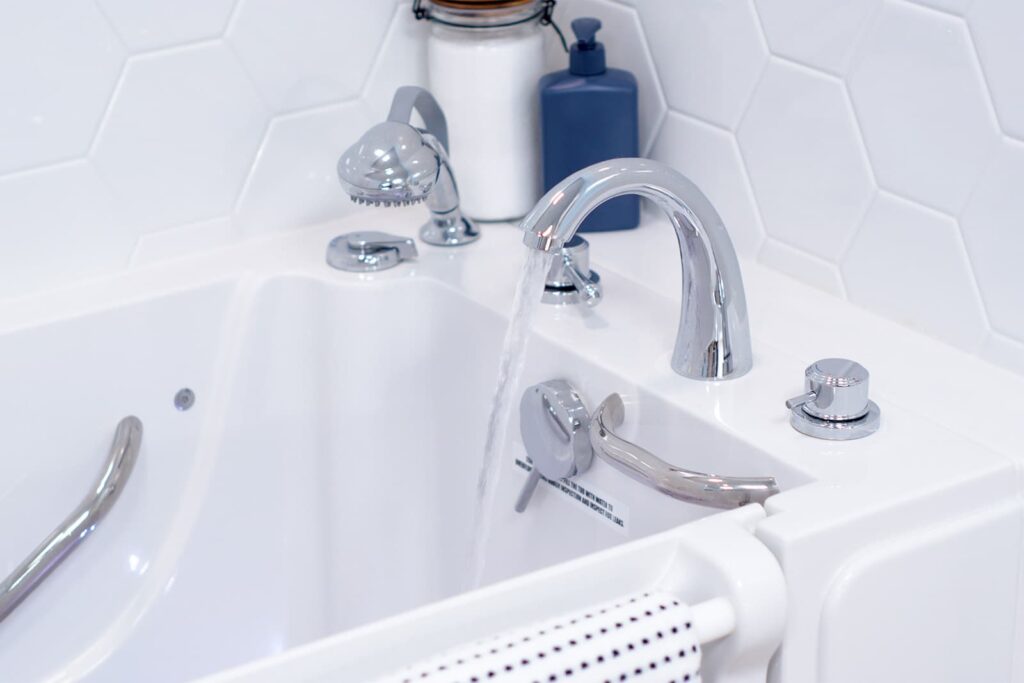
What Are Some Common Types of Walk-In Tubs?
Walk-in tubs come in a range of styles, each built to address different needs, from ones designed for specific mobility limitations to more versatile all-in-one tubs. Specific features and model types will vary depending on the brand.
- Soaker Walk-In Tub: A soaker walk-in tub provides a simple, comfortable way to bathe safely. It includes all of the essential safety features as higher-end models, without the added convenience and therapeutic benefits from features like hydrotherapy jets or a more specialized design.
- Air Jet Walk-In Tub: With jets that release heated air into the water, these walk-in tubs create a gentle massage experience for bathers in need of pain relief and restorative relaxation.
- Hydrotherapy Walk-In Tub: Similar to air tubs that use air jets to massage your body, a whirlpool tub uses jets of water and hydrotherapy to relieve tension, improve circulation and provide deep full-body relaxation.
- Walk-In Tub Shower Combo: A shower-tub hybrid brings versatility to your bathing routine in a space-saving design built for comfort and convenience, whether standing or sitting.
- Bariatric Walk-In Tub: For heavier bathers in need of greater accessibility, bariatric walk-in tubs are made with a larger frame, wider door and seat. Many also accommodate those in wheelchairs.
- Wheelchair Accessible Tub: As their name suggests, these tubs include wider doors and a specially designed seat for people in wheelchairs needing extra support and mobility assistance.
Enjoy $1,500 Off Your Walk-In Tub + Free Toilet, Including Installation!*
Request a free quote today!
Are There Added Features for a Walk-In Tub?
When selecting a walk-in bathtub, you’ll need to decide which features you prefer, from the basic setup to safety-focused and more therapeutic add-ons.
The built-in doors are one of the first things to consider. Some walk-in tub models feature doors that swing inward, while others swing outward. While the choice can be a simple matter of preference, there are specific benefits to each door type that make the decision important.
Doors that swing inward may be appropriate in bathrooms where limited space can restrict the door from opening outward. However, doors that open inward may pose an obstacle when entering or exiting the tub. With outward-opening doors, you gain freer movement within the tub and easier exit, especially for those in wheelchairs.
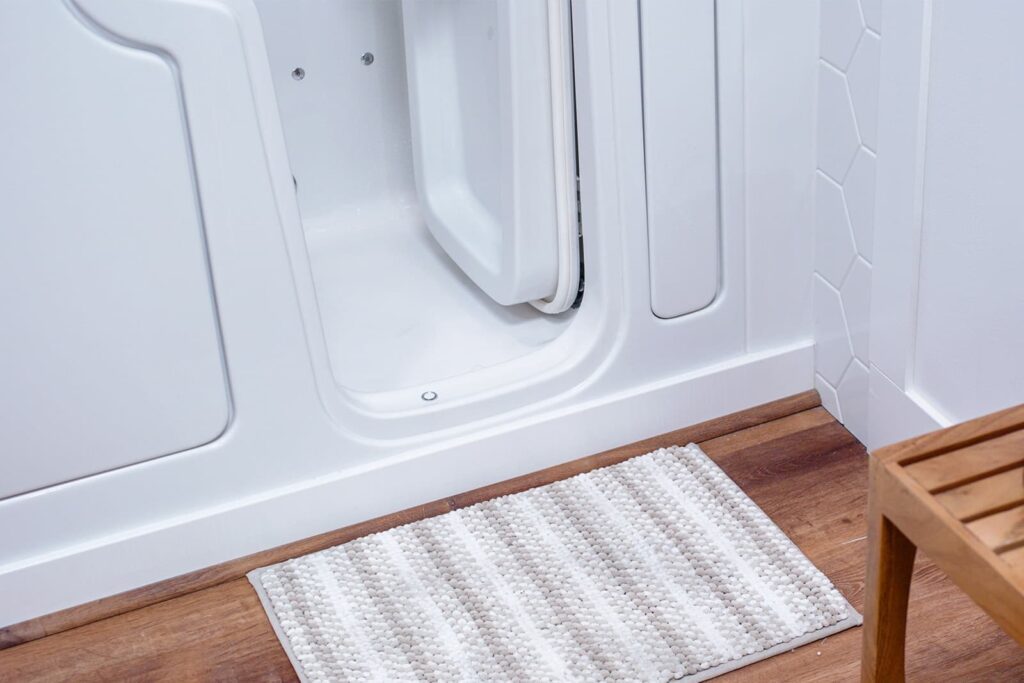
As far as safety features, some walk-in tubs offer additional built-in handholds to give users a source of stability. Walk-in tubs also feature a lower threshold and incorporated seating that allows those with balance issues to sit comfortably while bathing.
Looking to bring a new level of relaxation to your bathing experience? Consider comfort-forward and therapeutic features such as a heated seat and backrest, aromatherapy essential oil diffusers, a handheld shower wand and adjustable jets that offer hydrotherapy benefits.
What Are the Sizes and Dimensions of a Walk-In Tub?
The dimensions of a walk-in tub will depend on the specific make and model you choose, plus any add-on features. While many walk-in bathtubs will take up a similar footprint to your traditional tub, they are taller by comparison due to the doors and walls. Below are average walk-in tub dimensions based on Safe Step product measurements.
- Smallest recommended walk-in tub: 47” long x 28” wide
- Average walk-in tub: 51” x 28”
- Larger-sized walk-in tubs: 53” x 31”
How Much Does a Walk-In Tub Cost?
Walk-in bathtubs are an investment into your long-term safety and wellness. Given the range of brands, tub styles and many ways to customize your tub, there is no one-size-fits-all approach to pricing. One thing to keep in mind is that a walk-in tub helps seniors age comfortably at home, with upfront costs offsetting what you may pay down the road for assisted living or at-home care.
At Safe Step, walk-in tubs and showers built for your safety are our specialty, bringing greater independence and peace of mind to your daily routine. We offer custom pricing and a lowest price guarantee to make getting the safe bathing solution you need easier. Request a free quote today to transform the way you bathe.
